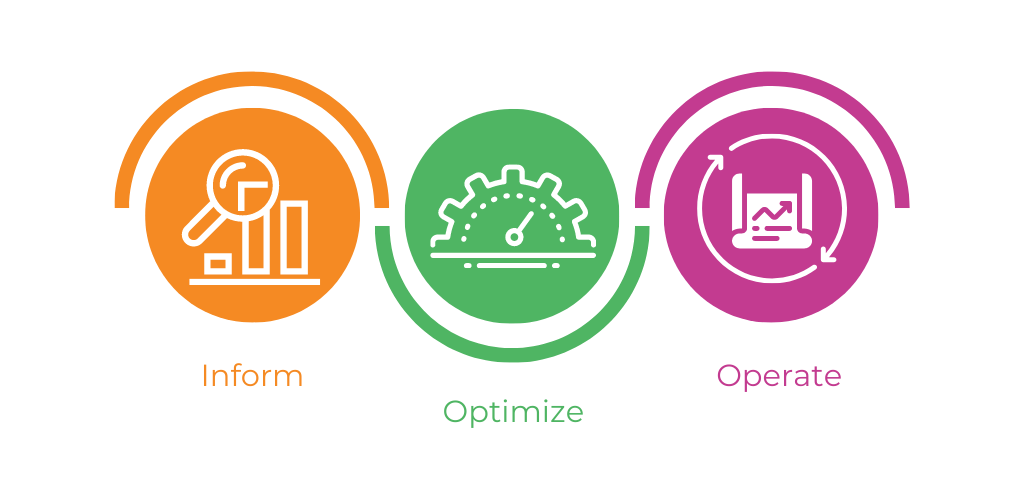Navigating the Cloud
Essential Tips for Successful Cloud Migration

In the ever-evolving digital landscape, cloud migration is no longer just an option but a necessity for businesses seeking agility, scalability, and cost-efficiency. However, the journey to the cloud is fraught with complexities and challenges. This comprehensive guide aims to demystify the process, providing you with essential tips for a successful cloud migration.
Understanding the Need for Cloud Migration
Before diving into the migration process, it's crucial to understand why moving to the cloud is beneficial for your business. Cloud computing offers unparalleled flexibility, allowing businesses to scale resources up or down based on demand. It also provides access to a broad range of technologies, such as advanced analytics and artificial intelligence, facilitating innovation and competitive advantage.
Step 1: Assessing Your Current Infrastructure
The first step in your cloud migration journey is a thorough assessment of your existing infrastructure. This involves identifying the applications and data that will move to the cloud and understanding their interdependencies. Key considerations include:
- Application Inventory: Catalog all your applications and determine their suitability for the cloud.
- Data Sensitivity: Identify sensitive data and understand compliance requirements.
- Performance Requirements: Assess the performance needs of your applications.
Step 2: Choosing the Right Cloud Service Provider
Selecting a cloud service provider is a critical decision. Factors to consider include:
- Service Offerings: Ensure the provider offers the services that match your business needs.
- Compliance and Security: Check if the provider meets industry-specific compliance and security standards.
- Pricing Structure: Understand the pricing models and choose one that aligns with your budget and usage patterns.
- Reputation and Reliability: Research the provider's track record and customer feedback.
Step 3: Planning the Migration
A well-thought-out plan is essential for a smooth migration. Key elements of the migration plan include:
- Migration Strategy: Decide on a migration strategy (e.g., rehosting, refactoring, or rebuilding).
- Timeline and Phases: Develop a realistic timeline, breaking down the migration into manageable phases.
- Risk Assessment: Identify potential risks and develop mitigation strategies.
- Stakeholder Engagement: Ensure all stakeholders are informed and involved in the process.
Step 4: Ensuring Security During the Migration
Security is a paramount concern during cloud migration. Best practices include:
- Data Encryption: Encrypt data both in transit and at rest.
- Access Controls: Implement strict access controls and identity management.
- Regular Audits: Conduct regular security audits to identify and address vulnerabilities.
- Compliance Checks: Continuously monitor compliance with relevant regulations.
Step 5: Executing the Migration
With a solid plan in place, you're ready to execute the migration. This phase involves:
- Data Transfer: Move your data to the cloud using secure transfer methods.
- Application Migration: Migrate your applications based on the chosen strategy.
- Testing: Conduct thorough testing to ensure everything works as expected in the new environment.
- Monitoring and Optimization: Continuously monitor performance and optimize resources for efficiency.
Real-World Example: Successful Cloud Migration
To illustrate these steps in action, let's consider a real-world example. Cashanova Corp, a mid-sized financial services firm, recently migrated its customer relationship management (CRM) system to the cloud. The company followed these steps:
- Assessment: They evaluated their CRM system, identifying data sensitivity and performance requirements.
- Provider Selection: After comparing several providers, they chose one that offered robust security features and compliance with financial regulations.
- Planning: Cashanova Corp developed a detailed migration plan, opting for a phased approach to minimize disruption.
- Security Measures: They implemented strong encryption and access controls to protect customer data during the migration.
- Execution: The CRM system was successfully migrated with minimal downtime. Post-migration, they conducted extensive testing to ensure functionality and security.
Conclusion
Cloud migration, while challenging, offers significant benefits for businesses willing to embrace digital transformation. By following these essential steps and learning from real-world examples, organizations can navigate the complexities of cloud migration and reap the rewards of a more agile, innovative, and efficient operational model.
Remember, the key to successful cloud migration lies in careful planning, choosing the right partner, and maintaining a strong focus on security throughout the process. With these tips in hand, you're well on your way to a successful cloud journey.










